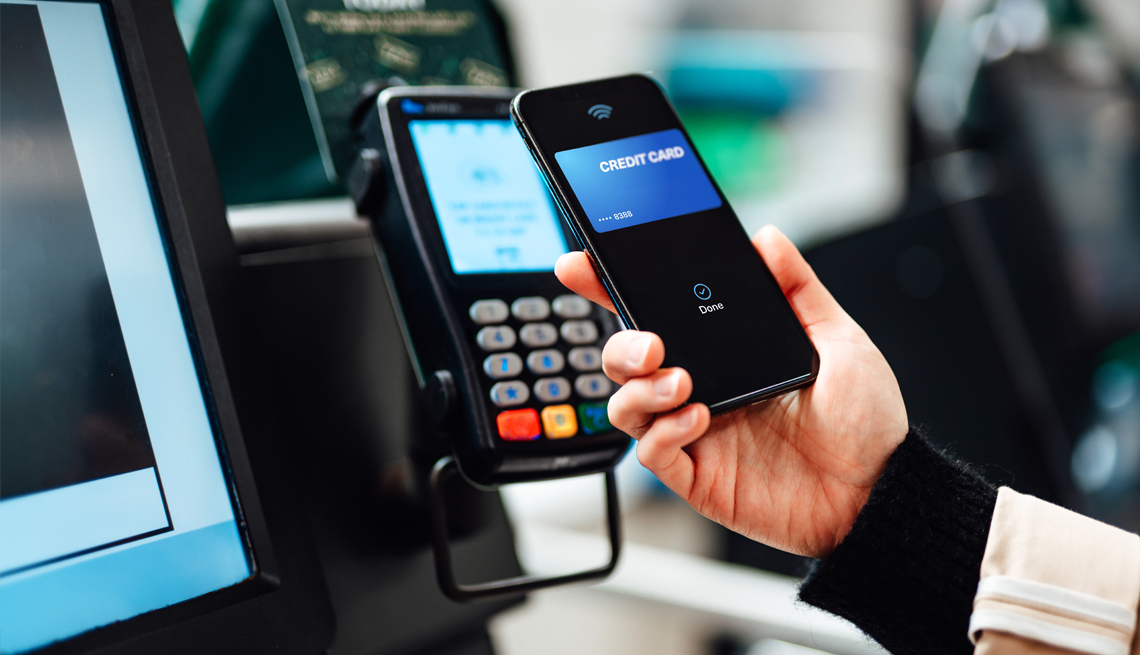
Digital wallets and the popularity of mobile pay
- Select a language for the TTS:
- UK English Female
- UK English Male
- US English Female
- US English Male
- Australian Female
- Australian Male
- Language selected: (auto detect) - EN
Play all audios:

“Do I want all of my very personal information in digital form for someone to have access to it?” asks Gregory H. Moore, 73, a psychologist near Princeton, New Jersey. “Convenience is
wonderful, but it allows the nefarious access to way too much about me.” The reality is that handing a credit card to a waiter or sales clerk is potentially riskier than using a digital
wallet built on encryption standards and biometric authentication such as facial recognition and fingerprints. Any point-of-sale terminal can be vulnerable to the surreptitious installation
of an identity theft device called a skimmer. For example, whenever you use Apple Pay, your actual credit or debit card number is not shared with the merchant, and Apple says it does not
have access to or share data about when or where you use Apple Pay. Others say they worry about losing their phone or running out of battery power. “I’d much rather leave home without my
phone than my wallet,” says Dave Migdal, cofounder of Here and Now Public Relations in Carlsbad, California. “[I] don’t have to keep my wallet charged.” COVID-19 BREAKS DOWN BARRIERS
COVID-19 has been a catalyst for behavior change. “Customers didn’t want to touch things in stores and at the same time are becoming more comfortable with tap and scan technology,” says
Jaime Toplin, senior research analyst for payments and commerce at Insider Intelligence in New York. Forrester Research recently predicted that 2022 will be a big year for the digital
wallet, again driven by the pandemic. “Some people switched almost overnight to online commerce. But even in person, a combination of QR codes, vaccination passes, and COVID check-in tools
all weigh in,” the firm blogged. Eleven percent of U.S. adults online surveyed by Forrester used a digital payment service for the first time in April 2020. A month later 19 percent made
such a payment in a store for the first time. Forrester added that 57 percent indicated they are “likely” to continue using digital or contactless payments. SEVERAL STATES OK DIGITAL
DRIVER'S LICENSES The iPhone crowd has able to pay using Apple Wallet since 2014. It not only lets you make contactless payments in person or online — employing the credit cards and
debit cards you’ve loaded into the app — but you also can tap and go in some cities to ride subway trains and buses, albeit not necessarily with the commuter discounts available with some
transit passes. In March, Arizona became the first state to launch a digital version of its driver’s license in the Apple Wallet app, which in some cases will also be accepted as proof of
identity at Transportation Security Administration checkpoints in airports. Several other states — Colorado, Connecticut, Georgia, Hawaii, Iowa, Kentucky, Maryland, Mississippi, Ohio,
Oklahoma and Utah — plan to soon follow suit, as does Puerto Rico. Even in its earliest incarnation, when it was known as Passbook, Apple let you store boarding passes in the app, along
with tickets to ballgames, concerts and theaters. The equivalent Android app is the recently announced new Google Wallet app, slated to launch this summer. In the U.S. and elsewhere, Google
Wallet will complement Google Pay, which has confusingly gone through a rebranding of its own through the years — the current iteration was formed in 2018 from the combination of an older
Google Wallet app and Android Pay. Google also plans to let its users store driver’s licenses in Google Wallet starting later this year, along with other forms of ID, event tickets, loyalty
cards and more. Both Apple and Google are also opening up their wallets to digital keys that will let people unlock their front doors, hotel doors and car doors. Android users have other
payment options besides Google Pay. Samsung Galaxy owners might choose to use the alternative Samsung Pay mobile wallet system.
